Table of Contents
Hydroponics, the practice of cultivating plants without soil, has gained significant popularity in recent years due to its numerous advantages over traditional soil-based farming. One of the key factors contributing to the success of hydroponics is the efficient delivery of water and nutrients to plants. Among the various hydroponic systems available, drip irrigation systems have emerged as a versatile and widely adopted choice. In this article, we will explore the concept of drip irrigation systems in hydroponics, their unique features, and the benefits they offer in terms of water efficiency and nutrient delivery. We will also provide practical insights into setting up and maintaining a successful drip system for your hydroponic garden.

Understanding Drip System in Hydroponics
Definition and Basic Concept
Drip system hydroponics is an adaptation of traditional drip irrigation, which has been used for decades in conventional agriculture. In traditional drip irrigation, water is delivered directly to the plant’s root zone through a network of tubes and emitters, minimizing water waste. In hydroponics, It involves utilizing the same principles of delivering water and nutrients to plant roots by slowly dripping the solution directly onto the growing medium. In soil-less hydroponic cultivation, drip systems excel in their ability to provide targeted irrigation, promoting optimal plant growth and maximizing resource efficiency.
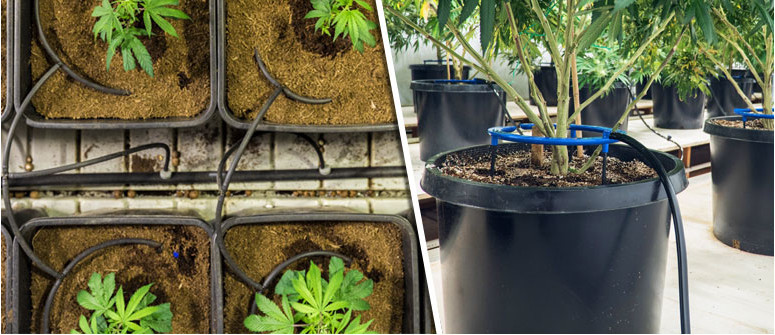
A typical drip irrigation system in hydroponics consists of several key components. These include a reservoir to store the nutrient solution, a pump to deliver the solution, and a distribution network of tubing and emitters. The emitters, commonly known as drippers or micro-irrigation devices, play a crucial role in delivering the water and nutrient solution directly to the plant’s root zones.
Key Advantages of Drip Systems
Drip irrigation systems offer several significant advantages in hydroponics:
Water Efficiency:
Drip systems are highly efficient in water usage, as they deliver water directly to the root zone, minimizing evaporation and runoff. This results in significant water savings compared to conventional irrigation methods.
Precise Nutrient Delivery:
Drip systems allow for precise control over the nutrient delivery to plants. By directly targeting the root zone, plants receive the required nutrients in optimal amounts, leading to enhanced growth and productivity.
Reduced Water Wastage:
Unlike other hydroponic systems, such as flood and drain or nutrient film technique, drip systems minimize water wastage. Excess water is collected and recirculated, reducing the overall water consumption.
Automation and Low Maintenance:
Drip systems can be easily automated using timers, sensors, and valves, making them convenient for busy gardeners. Additionally, they require relatively low maintenance, as there are no trays or channels to clean.
Scalability:
Drip systems can be scaled up or down to accommodate various garden sizes, making them suitable for both small-scale home gardening and large commercial operations.
Comparison with Other Hydroponic Systems
While there are several hydroponic systems available, each with its unique features, drip irrigation systems stand out due to their specific advantages.
For example, compared to flood and drain systems, which periodically flood the plant roots and then drain the excess water, drip systems offer better control over water and nutrient delivery. Drip systems provide a continuous and precise supply of water, preventing waterlogging and ensuring optimal nutrient absorption.
Similarly, compared to nutrient film technique (NFT) systems, which continuously flow a thin film of nutrient solution over the plant roots, drip systems allow for better customization of nutrient delivery. NFT systems are more suitable for fast-growing, shallow-rooted plants, while drip systems can accommodate a wider range of plant species and growth rates.
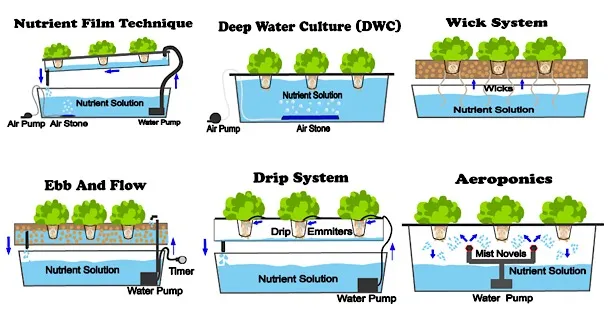
In Deep Water Culture, plants are suspended in a nutrient-rich solution. Drip systems, on the other hand, supply water and nutrients directly to the growing medium or substrate, offering better control over the root environment.
Components of Drip Irrigation Systems
To gain a deeper understanding of how drip irrigation systems function, let’s explore the key components involved:
Main Water Supply and Filtration System
The main water supply provides the source for the nutrient solution. It is essential to use clean, filtered water to prevent clogging of the emitters and ensure the longevity of the system. A filtration system, consisting of mesh filters or sediment filters, helps remove any debris or impurities from the water.
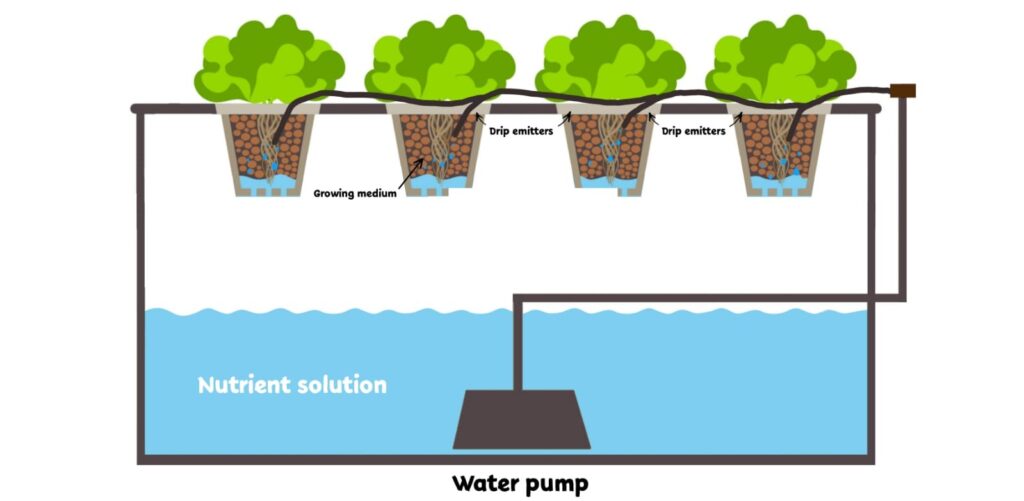
Pumping System for Water and Nutrient Delivery
A pump is used to deliver the nutrient solution from the reservoir to the plants. The pump should be appropriately sized to ensure an adequate flow rate for efficient irrigation. It is crucial to choose a pump that can handle the pressure requirements of the drip system and maintain a consistent flow of the nutrient solution.
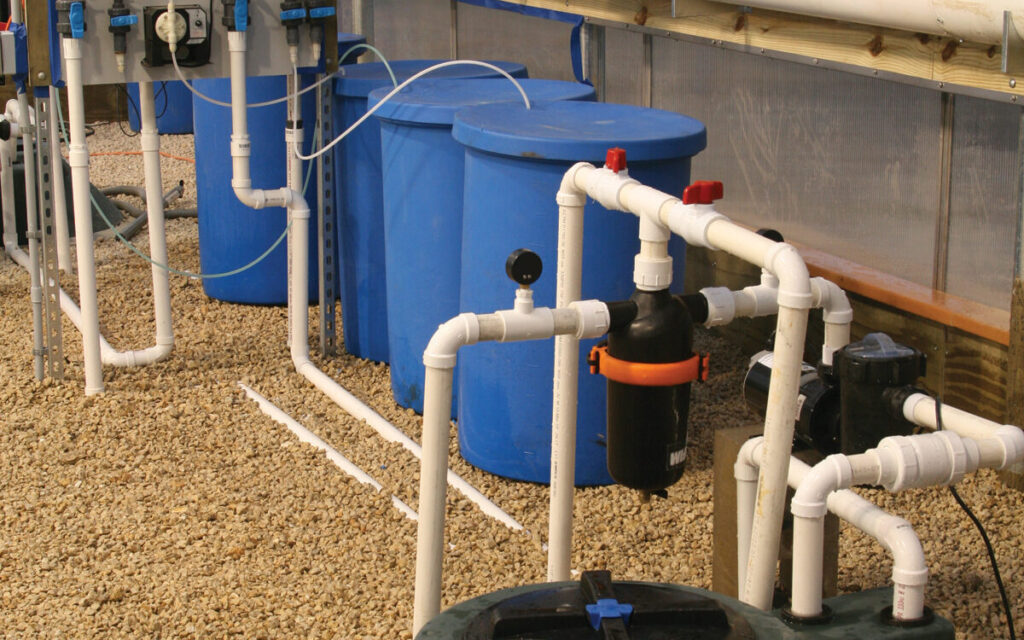
Distribution Network (Tubing, Emitters, Drippers, Micro-sprinklers)
The distribution network includes tubing, emitters, drippers, or micro-sprinklers. The tubing connects the pump to the emitters, carrying the nutrient solution to the plants. Emitters, such as drippers or micro-sprinklers, deliver the solution at a controlled rate directly to the plant’s root zones. These emitters can be adjustable, allowing for fine-tuning of the water and nutrient delivery to suit specific plant requirements.
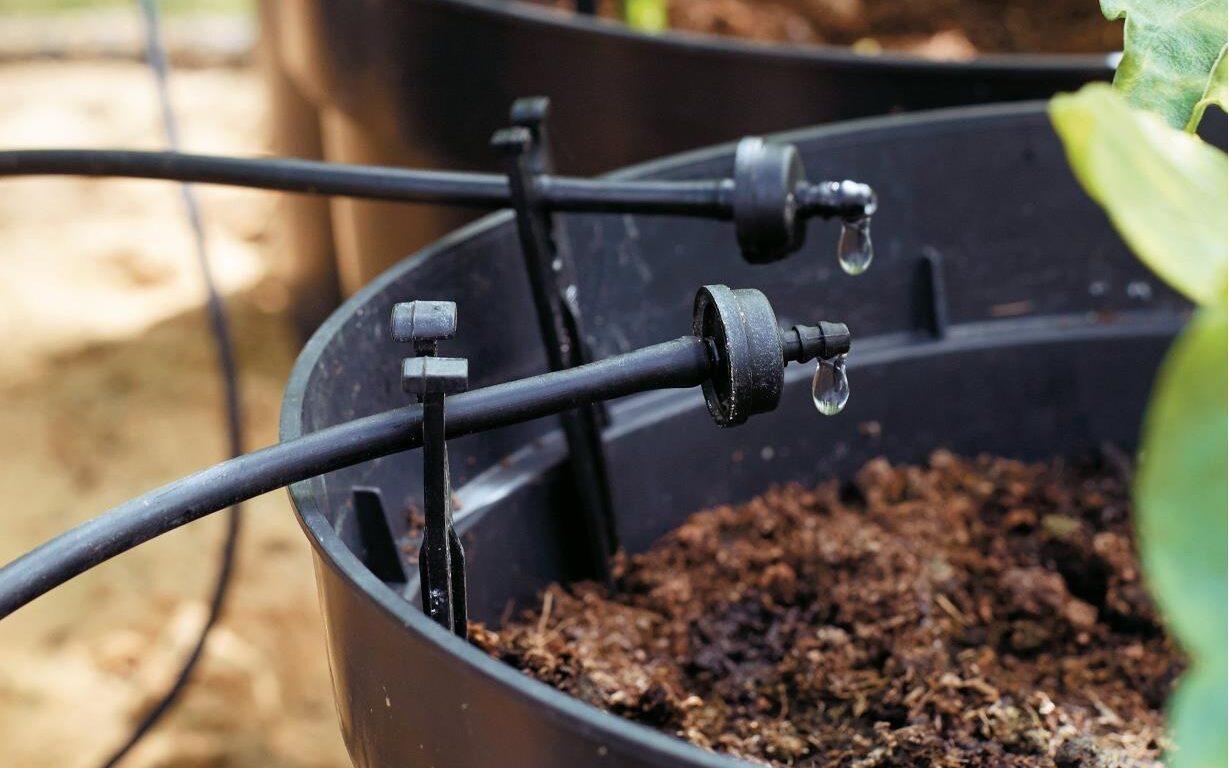
Control Mechanisms (Timers, Valves, Sensors)
Control mechanisms play a vital role in automating and regulating the drip system. Timers control the frequency and duration of irrigation cycles, ensuring plants receive water and nutrients at optimal intervals. Valves are used to control the flow of the nutrient solution, while sensors can monitor parameters such as moisture levels, pH, and electrical conductivity (EC), providing valuable feedback for system adjustments.
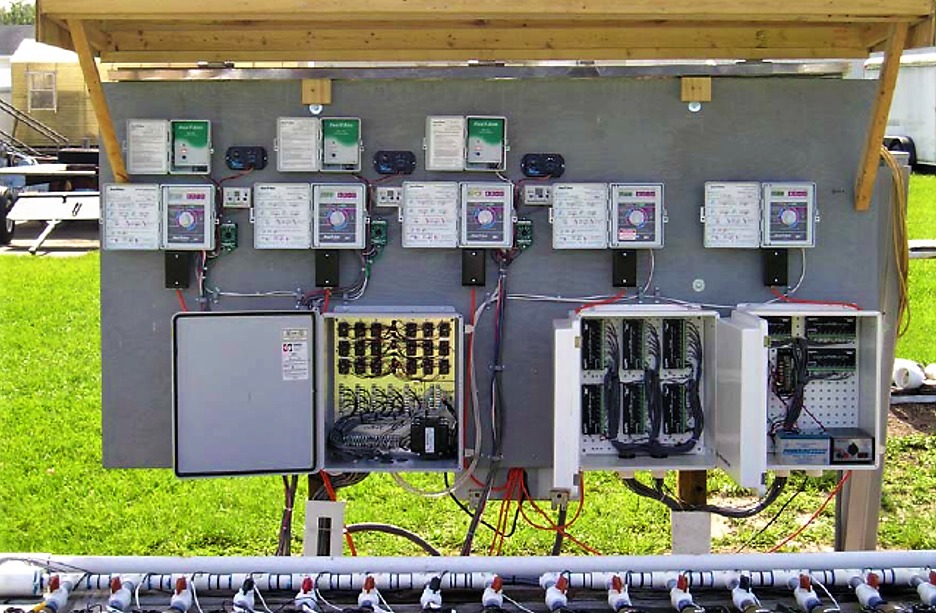
Backflow Prevention and Pressure Regulation Devices
To maintain the integrity of the nutrient solution and prevent contamination, backflow prevention devices are employed in drip irrigation systems. These devices ensure that water flows in one direction and does not contaminate the main water supply. Pressure regulation devices, such as pressure regulators or pressure-compensating emitters, help maintain consistent pressure throughout the system, ensuring uniform irrigation across all plants.
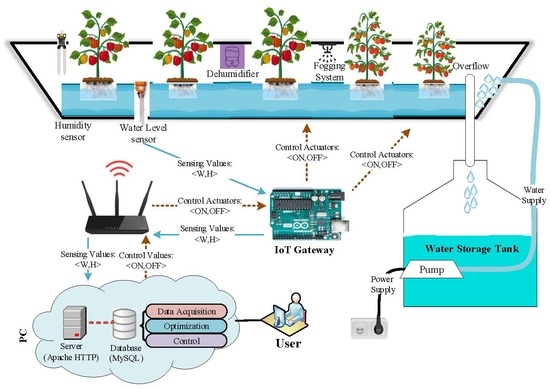
How Drip Systems Work
Understanding the working principles of drip irrigation systems is essential for maximizing their efficiency and effectiveness in hydroponics.
Water and Nutrient Supply
In a drip system, the nutrient solution is stored in a reservoir. The pump delivers the solution from the reservoir to the plants through the distribution network. As the solution flows through the drip lines, emitters or drippers ensure a slow and controlled release of water and nutrients, directly targeting the root zone.
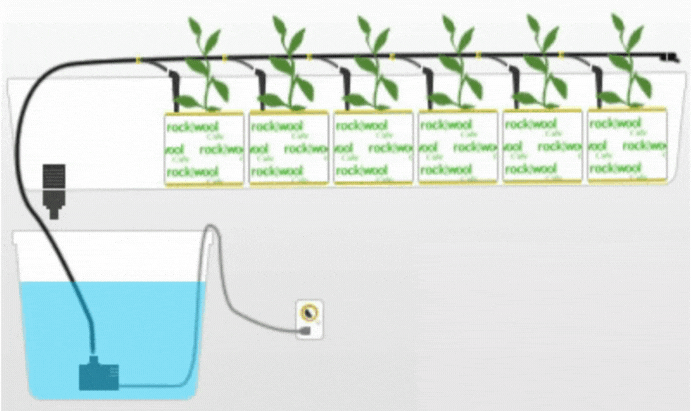
Flow Control and Regulation
Proper flow control and regulation are crucial for optimal plant growth. Adjustable drippers or emitters allow for precise control of the flow rate, ensuring each plant receives the appropriate amount of water and nutrients. It is essential to maintain the correct flow rate based on plant requirements to avoid over- or under-irrigation.
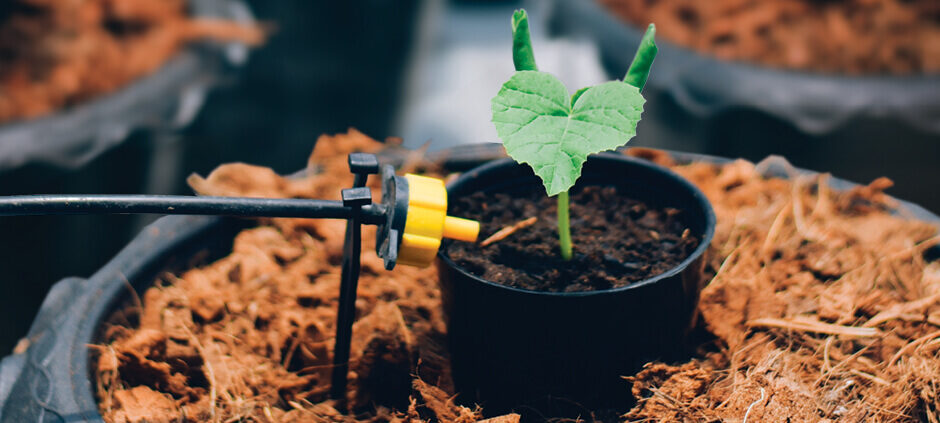
Root Zone Optimization
One of the key advantages of drip systems is their ability to directly target the root zone. The slow and controlled release of water and nutrients allows plants to absorb them more effectively, promoting healthy root development. By keeping the foliage dry, drip systems also minimize the risk of foliar diseases, enhancing overall plant health.
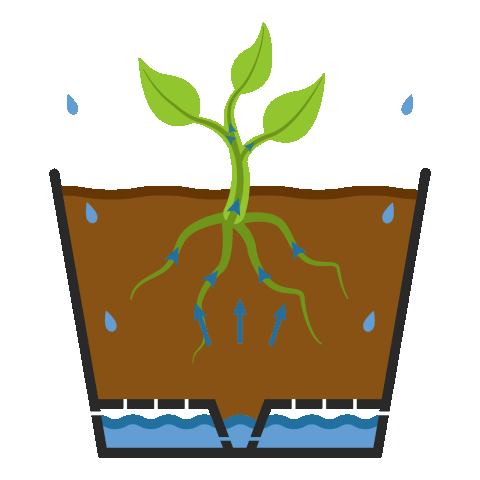
Impact on Plant Growth and Productivity
The targeted delivery of water and nutrients offered by drip systems has a significant impact on plant growth and productivity. By providing the right amount of resources directly to the roots, plants can utilize them more efficiently. This results in improved nutrient uptake, faster growth rates, higher yields, and enhanced overall plant quality.
Setting Up a Drip Irrigation System
To ensure a successful drip irrigation system, careful planning, proper installation, and regular maintenance are essential. Let’s explore the key steps involved:
Planning and Design
Step 1:
Assess Your Garden: Evaluate the size and layout of your garden, taking into account the number and types of plants you plan to grow. Consider factors such as plant spacing, water source, nutrient requirements, and the size of your hydroponic setup. Design a layout that ensures uniform coverage and efficient use of resources. Take into account the specific needs of your plants and the environmental conditions of your growing space.
Step 2:
Determine Water Source: Identify the water source for your drip system, ensuring it is easily accessible and can provide the required volume of water.
Step 3:
Calculate Nutrient Solution: Calculate the amount of nutrient solution needed based on the number of plants and their nutrient requirements. Consult hydroponic nutrient solution guidelines or seek expert advice for accurate calculations.
Step 4:
Select Components: Choose the appropriate tubing, emitters, pump, and control mechanisms based on your garden’s size and requirements. Ensure compatibility between the components to achieve optimal system performance.
Installation Process
Step 1:
Assemble the Components: Connect the tubing to the pump and distribute it throughout the garden, positioning it close to the plants. Install emitters or drippers at appropriate intervals along the tubing, considering the specific water and nutrient needs of each plant.
Step 2:
Proper Placement of Emitters: Position the emitters close to the plants’ root zones, ensuring they deliver water and nutrients directly to the desired areas. Consider the growth habits of the plants and adjust the emitter placement accordingly.
Maintenance and Troubleshooting
To keep your drip irrigation system running smoothly, regular maintenance is crucial. Here are some guidelines to follow:

Check for Clogs:
Regularly inspect and clean the drip lines, emitters, and filters to prevent clogging. Remove any debris or mineral deposits that may hinder the flow of the nutrient solution.
Adjust Flow Rates:
Monitor and adjust the flow rates of the drippers or emitters as needed. This ensures that plants receive the correct amount of water and nutrients, avoiding over- or under-irrigation.
Inspect for Leaks:
Regularly check for leaks or damaged components in the system. Repair or replace any faulty parts to maintain optimal functionality.
Common Issues and Troubleshooting Solutions
Despite proper maintenance, issues may arise in a drip irrigation system. Here are some common problems and their troubleshooting solutions:
- Uneven Water Distribution: If some plants receive more water than others, check for clogged emitters or tubing. Adjust the flow rates or replace faulty components as necessary.
- Low Flow Rate: If the flow rate of the nutrient solution is insufficient, check the pump and filters for blockages. Clean or replace them if needed, ensuring smooth flow.
- Leakage: If there are leaks in the system, inspect the connections and tighten them. Replace damaged or worn-out components, such as tubing or connectors, to prevent further leakage.
Best Practices and Tips for Drip Systems
To maximize the efficiency and effectiveness of your drip irrigation system, consider the following best practices and tips:
Nutrient Solution Management
Balanced Nutrient Solution:
Regularly monitor and maintain a balanced nutrient solution to ensure optimal plant health and growth. Adjust the nutrient levels based on plant requirements and growth stages.
pH and EC Levels:
Monitor and adjust pH and electrical conductivity (EC) levels of the nutrient solution regularly. Different plants have specific pH and EC requirements, so ensure they are within the recommended range for your crop.
Watering Schedule and Frequency
Environmental Factors:
Consider environmental factors such as temperature, humidity, and light intensity when determining the watering schedule. These factors can influence the water requirements of your plants.
Plant Needs:
Monitor the moisture levels in the root zone to gauge when to water. Avoid overwatering or allowing the root zone to dry out completely. Factors such as plant size and stage of growth influence the frequency and duration of irrigation. Create a schedule that provides adequate moisture without overwatering or causing water stress.
System Optimization and Expansion
As your hydroponic garden evolves, you may need to optimize or expand your drip irrigation system. Consider the following tips:
Efficient Use of Space:
Maximize the efficiency of your hydroponic setup by optimizing plant spacing and arrangement. This ensures that each plant receives adequate water and nutrients while utilizing the available space effectively.
Scalability and Adaptability:
Drip irrigation systems are highly scalable and adaptable. As your crop size or variety diversifies, you can easily expand the system by adding more drip lines, emitters, or tubing to accommodate the growing needs.

Benefits and Applications of Drip Irrigation Systems
Drip irrigation systems offer several advantages and have various applications in hydroponics:
Water Efficiency and Conservation Benefits
Drip systems are known for their exceptional water efficiency. By directly delivering water to the root zones, they minimize water wastage through evaporation or runoff. This water-saving feature is especially crucial in regions with water scarcity or for gardeners aiming to reduce their environmental footprint.
Increased Plant Productivity and Yield
The precise delivery of water and nutrients to the root zone enhances plant growth and productivity. Drip systems provide plants with the necessary resources in the right quantities, resulting in healthier plants, accelerated growth, and higher yields. This makes drip irrigation particularly advantageous for commercial hydroponic operations focused on maximizing production.
Commercial and Home Gardening Applications
Drip irrigation systems are suitable for various hydroponic setups, ranging from small-scale home gardens to large-scale commercial farms. They can be implemented in greenhouse systems, vertical farming, or even balcony gardens, offering flexibility and adaptability to different spaces.
Scalability and Adaptability for Different Types of Hydroponic Setups
Drip systems can be scaled up or down depending on the size of your hydroponic operation. Whether you have a small home garden or a large commercial facility, drip systems can be customized to meet your specific needs. They can accommodate different plant varieties, growth rates, and nutrient requirements, making them highly versatile.
Cost Considerations and Return on Investment
While the initial setup cost of a drip irrigation system may be higher compared to some other hydroponic systems, the long-term benefits outweigh the investment. Water savings, reduced nutrient wastage, increased plant productivity, and lower maintenance requirements contribute to a favorable return on investment over time.
Conclusion
Drip irrigation systems have revolutionized hydroponics by providing an efficient and effective means of delivering water and nutrients to plants. With their water-saving capabilities, precise nutrient delivery, scalability, and adaptability, drip systems have become a popular choice for both commercial hydroponic operations and home gardeners.
By implementing a well-designed drip irrigation system, you can optimize plant growth, increase yields, and contribute to sustainable agriculture. Explore the possibilities of drip systems in your hydroponic garden and enjoy the benefits of efficient water and nutrient delivery for healthy, thriving plants.

FAQ (Frequently Asked Questions)
1. Are drip irrigation systems suitable for all types of plants in hydroponics?
Yes, drip irrigation systems are highly versatile and can be used for a wide range of plants in hydroponics. They are suitable for growing various crops, including vegetables, herbs, flowers, and even exotic plant species. By adjusting the flow rates and nutrient levels, drip systems can meet the specific requirements of different plants.
2. How do I determine the correct flow rate for my drip irrigation system?
The flow rate of your drip system depends on factors such as plant type, growth stage, and environmental conditions. Start with a moderate flow rate and monitor the moisture levels of the growing medium and the appearance of the plants. Adjust the flow rate as needed to ensure optimal moisture levels and prevent over- or under-irrigation.
3. Can I automate my drip irrigation system?
Yes, drip irrigation systems are highly compatible with automation. You can incorporate timers, sensors, and control mechanisms into your system to automate the watering process. This allows you to maintain consistent watering schedules, adjust nutrient delivery, and even remotely monitor and control your hydroponic setup.
4. What maintenance is required for a drip irrigation system?
Regular maintenance is essential to keep your drip irrigation system functioning optimally. Maintenance tasks include checking for clogs in the drip lines and emitters, adjusting flow rates, inspecting for leaks, and replacing any damaged or worn-out components. Regular monitoring and maintenance will ensure efficient water and nutrient delivery to your plants.
5. Can I expand my drip irrigation system as my hydroponic garden grows?
Yes, one of the advantages of drip irrigation systems is their scalability and adaptability. As your hydroponic garden expands, you can easily expand your drip system by adding more drip lines, emitters, or tubing to accommodate the growing number of plants. This allows you to scale up your production while maintaining precise water and nutrient delivery.
7. Are drip irrigation systems cost-effective in the long run?
Although the initial setup cost of a drip irrigation system may be higher compared to other hydroponic systems, the long-term benefits make it cost-effective. Drip systems save water, reduce nutrient waste, and promote plant health and productivity. Over time, the savings in water and nutrients, as well as increased yields, will provide a significant return on investment.
7. Can I use a drip irrigation system for outdoor hydroponic gardens?
Yes, drip irrigation systems can be used for outdoor hydroponic gardens. However, when setting up a drip system for outdoor use, consider factors such as exposure to sunlight, wind, and temperature fluctuations. Use durable materials and secure the system properly to withstand outdoor conditions and ensure consistent water and nutrient delivery.
8. Do drip irrigation systems work with all types of growing media in hydroponics?
Yes, drip irrigation systems are compatible with various types of growing media commonly used in hydroponics, such as rockwool, coco coir, perlite, and vermiculite. The slow and controlled release of water and nutrients from drip systems accommodates different growing media and promotes optimal root development and plant growth.
9. Can I use a drip irrigation system for both small and large hydroponic setups?
Absolutely! Drip irrigation systems are suitable for hydroponic setups of all sizes. Whether you have a small home garden or a large commercial farm, drip systems can be tailored to meet your specific needs. The scalability and adaptability of drip irrigation allow for efficient water and nutrient delivery, regardless of the size of your hydroponic operation.
10. Can I use a drip irrigation system for vertical hydroponic setups?
Yes, drip irrigation systems can be used for vertical hydroponic setups. In vertical gardens or tower systems, the drip lines can be strategically placed to deliver water and nutrients to each plant or row. Drip irrigation ensures that water is distributed evenly throughout the vertical arrangement, promoting healthy growth and maximizing space utilization.
Remember, if you have any specific questions or concerns about setting up and using a drip irrigation system in hydroponics, it’s always recommended to consult with experts or professionals in the field who can provide personalized guidance and assistance.
Disclaimer: The information provided in this article is for educational purposes only. Consult local experts and reputable sources before implementing any hydroponic system or making significant changes to your gardening practices.
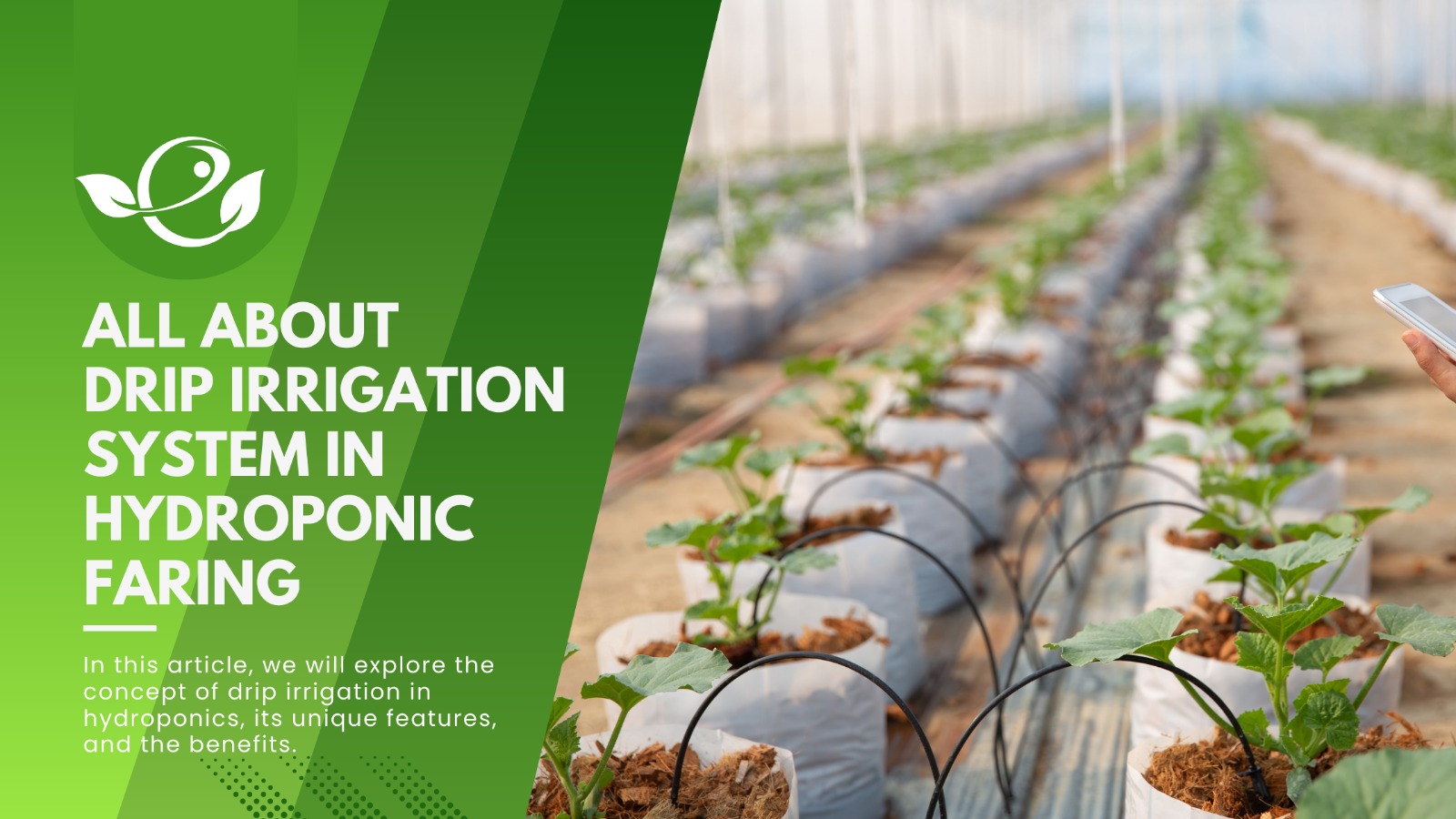


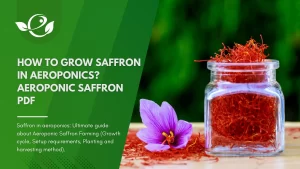

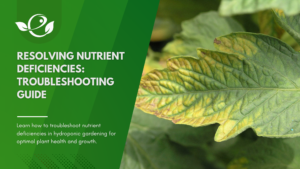
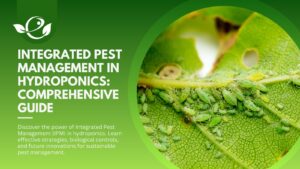


This Post Has One Comment
Ι’m really inspired along wіth your writing abilities and also with thе structure on yoսr blog.
Is that this a paid subject or did you mοԁify it yourself?
Anyway keep up the nice high quality writing, it is raгe to loⲟk a nice blⲟg lіke
this one these days..